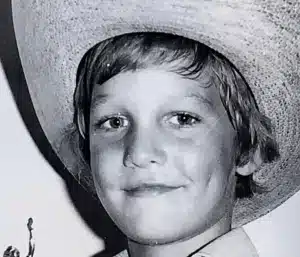For most people, death is a distant, unwanted thought. For Julie McFadden, it’s the rhythm of her workday. The California hospice nurse has spent years guiding patients and families through the last stretch of life, and her plainspoken reflections have resonated with millions who’ve watched illness steal the people they love. After more than a hundred bedside goodbyes, she’s candid about which diseases tend to inflict the most suffering—and which often allow for a more gentle exit.
McFadden doesn’t hesitate when asked which end-of-life course is the harshest. ALS, or Lou Gehrig’s disease, is the one she calls uniquely cruel. It dismantles the body one voluntary muscle at a time—speech softens into silence, swallowing becomes perilous, movement shrinks to a blink—while the mind remains painfully clear.
“This is the cruelest death I’ve ever seen,”
she said in a recent interview. Families echo the sentiment, describing the agony of watching a loved one remain mentally present while their body locks them in place. The disease can move quickly or slowly, but it is always fatal, and the absence of a cure leaves families managing symptoms and savoring moments as they fade. Comments from people who’ve lived it are strikingly similar: the most devastating part isn’t only what ALS takes—it’s what it leaves untouched.
Close behind, McFadden points to glioblastoma, an aggressive brain cancer that rewires a person’s life in months. The tumor doesn’t just threaten survival; it scrambles identity. Memory slips become gaping holes. Familiar faces blur. Personality bends under pressure. Seizures, confusion, and headaches add a layer of chaos that is terrifying for everyone in the room.
“It takes everything—your memory, your motor skills, your personality,”
she explains. The timeline is brutal: many patients live around a year to 18 months after diagnosis, and for families, it can feel like losing someone before they’ve actually died. Loved ones often describe the grief as twofold—the anticipatory grief of watching a person disappear in real time, and the final loss that follows.
Not every ending, however, is marked by turmoil. McFadden frequently sees a far quieter exit with end-stage kidney disease when a patient elects to stop dialysis as part of comfort-focused care. The body, relieved of the strain of treatments, often moves into a soft, sleepy drift.
“When patients stop dialysis, they usually just get sleepy. And then they don’t wake up,”
she says. Families describe these deaths as unexpectedly beautiful: a favorite playlist low in the background, hands held, stories told, a sense of control restored. For many, it’s a gift to trade invasive routines for time together—an ending shaped by presence rather than procedures.
These observations do more than rank diseases. They nudge us toward a larger conversation about dignity and honesty at the end of life. McFadden’s videos and interviews land because they answer questions people are afraid to ask: What will it look like? Will they be in pain? How will we know it’s close? Hospice nurses sit at that intersection of medicine and meaning. They advocate for comfort, demystify symptoms, and help families understand which changes are part of dying—and which can be eased.
There’s also a cultural shift happening in the background. As a country, we’re still uncomfortable with death, yet increasingly aware of how the last chapter can be shaped. More people are exploring advance directives, palliative care, and hospice earlier. They’re asking for fewer machines and more conversation, fewer alarms and more touch. McFadden’s message sits right there: we can’t choose if we die, but we can often influence how—and who we are to one another while it’s happening.
It’s important to remember that no two deaths are identical. Bodies, histories, and family dynamics make every bedside different. Even within the same diagnosis, the path can vary. But patterns exist, and naming them brings relief. Knowing that ALS tends to keep the mind intact while the body fails prepares families to communicate differently. Understanding glioblastoma’s speed helps people seize time they still have for memory-making and practical planning. Recognizing that ending dialysis can lead to a peaceful, sleepy departure gives patients permission to prioritize comfort without shame.
In the end, McFadden isn’t just cataloging hard realities. She’s offering a way to walk through them: with clear information, humane choices, and an insistence on comfort. Death remains unavoidable. Suffering doesn’t have to be. And with the right support, even the hardest goodbyes can be threaded with love—steady hands, quiet rooms, and the grace of telling the truth.







